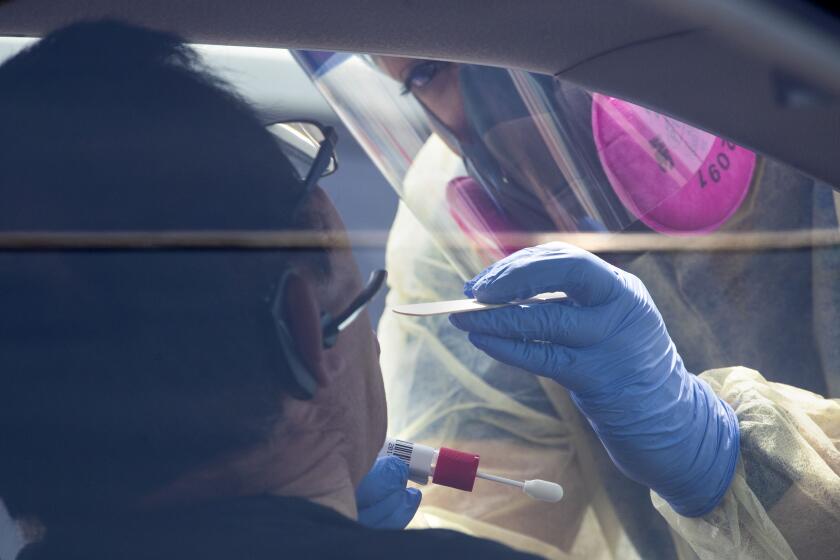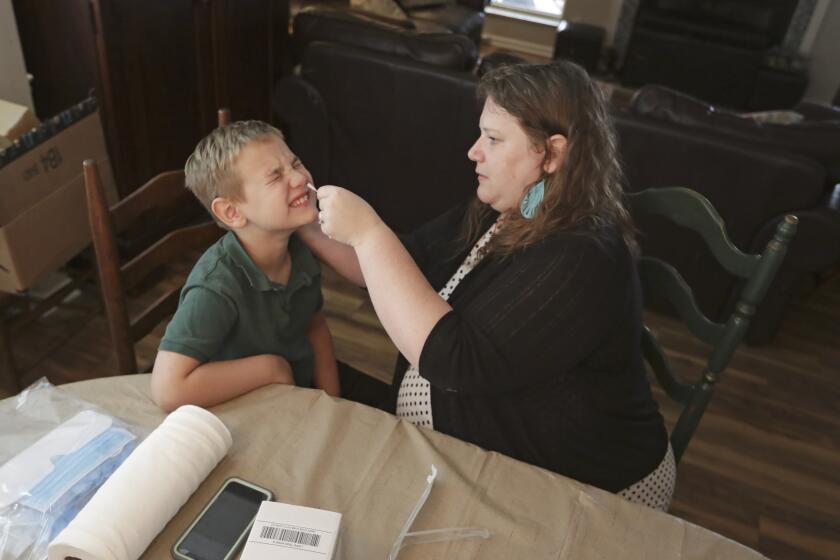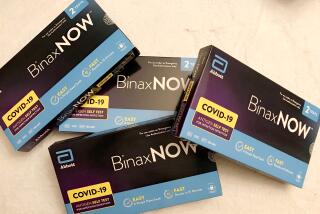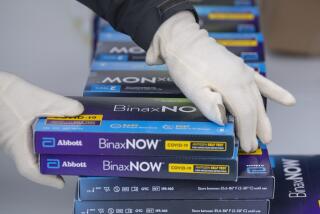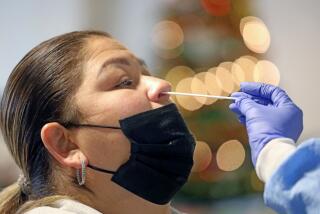How key bottlenecks scrambled coronavirus testing in Sacramento
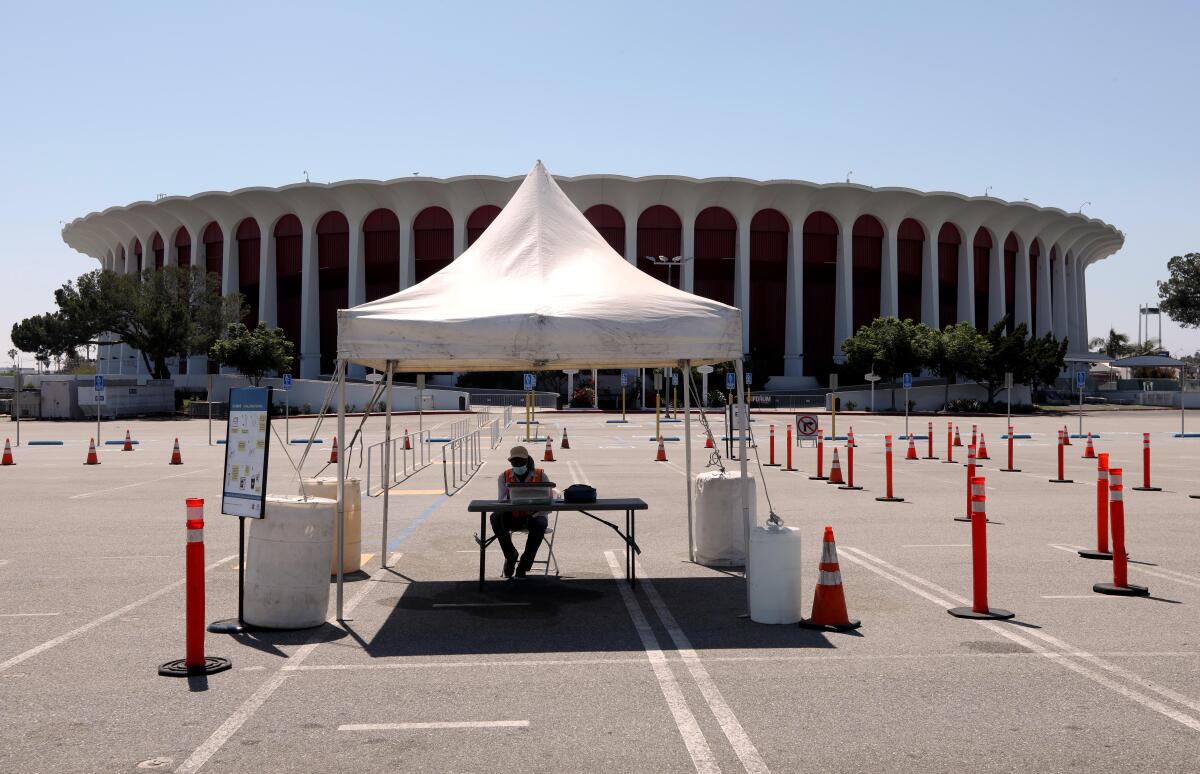
In some ways, the nation’s coronavirus testing system is like a game of Jenga: When one piece falters, the entire tower collapses.
Take Sacramento County, home to 1.5 million people. Coronavirus cases started surging there in late June, and on July 15, 360 residents were diagnosed with COVID-19 — a single-day record.
Around that time, people flocked to testing sites run by state, county and local health systems and other testing providers like CVS.
But securing a test became next to impossible for many people. Even as Gov. Gavin Newsom touted California’s ability to test roughly 100,000 people per day, Sacramento’s time slots filled quickly, five testing sites run by the county temporarily shuttered, and some healthcare providers limited testing to patients who were visibly sick.
For those lucky enough to get tested, results took days — sometimes weeks — to return, rendering them essentially useless.
“Results should come in 24 to 48 hours, ideally, from when people are exhibiting symptoms,” said Dr. Olivia Kasirye, the county’s public health officer. “It impacts our ability to take action and do contact investigations.”
So what happened? Sacramento, like other counties across the state and nation, has been plagued by key choke points in its testing system since the pandemic began. During the summer surge, these bottlenecks dramatically reduced testing capacity and slowed results.
“It’s pretty stunning that we are still having these bottlenecks,” said David Lazer, a professor at Northeastern University and co-author of a recent report on turnaround times for test results across the U.S.
“It was understandable when New York was struggling in March, but why is California struggling now?” he said. “It’s a local manifestation of national shortages.”
California failed to establish an effective coronavirus testing system early on, leaving it far behind — even now — in the fight against COVID-19.
In Sacramento, the first choke point emerged as people flocked to testing sites, placing a heavy burden on commercial labs that processed tests, such as Quest Diagnostics and LabCorp.
With COVID hot spots flaring, the labs faced mounting backlogs, sometimes delaying results by more than a week.
During Quest’s second-quarter earnings call in late July, Chief Executive Steve Rusckowski explained why the company was struggling to keep up with demand despite its rapidly increased testing capacity.
Beyond catering to regions with high numbers of COVID-19 cases, Rusckowski said Quest was also responding to the testing needs of patients scheduled for surgery, high-risk residents at places like nursing homes and prisons, employers testing their workers, and universities requiring tests for returning students. The company said it performed 3.5 million diagnostic tests in July, up from 1.5 million in May.
Smaller regional operations have popped up to ease the demand. Before the pandemic, Folsom, Calif.-based StemExpress focused primarily on collecting and distributing blood and bone marrow for research and treatments. In early April, the company started processing COVID-19 tests. Now, StemExpress performs tests for Sacramento and other counties, healthcare systems, private businesses and even the Sacramento Kings basketball team.
To keep up, StemExpress purchased certified COVID-19 testing machines and secured yearlong pre-purchasing contracts for the necessary supplies and chemicals. The company has hired more than 30 people and deploys workers round-the-clock to guarantee results in 48 to 72 hours. Still, it’s a fraction of what Quest churns through daily.
“It was a huge front-end financial investment — millions of dollars,” said Hether Ide, a company vice president. StemExpress now has the capacity to process 10,000 tests per day, though it generally averages that in a week, Ide said.
A surge in demand was only the first problem. That led to a second major bottleneck: a shortage of supplies needed to process the tests.
In early July, Sacramento temporarily closed five of its county-funded testing sites because its testing partner, UC Davis Health, could not secure enough chemical reagents to run its test-processing machine, made by Swiss manufacturer Roche.
Indeed, manufacturers of lab processing supplies have struggled for months to keep up with the global demand. For instance, Thomas Schinecker, chief executive of Roche, said the company had increased production of popular COVID-19 testing machines and materials to about four times its normal level.
Thousands of U.S. families are swabbing their noses twice a week in a DIY experiment to help solve some of the mysteries about the coronavirus.
To get the testing sites back up and running, Sacramento turned to StemExpress to pick up the slack. UC Davis Health now has adequate supplies and is running about 2,500 tests per week, including some for the county, a spokesperson for the health system said.
Sacramento County said it had reduced its turnaround time to 72 hours for results and had recently added community testing sites.
Earlier in the pandemic, a different type of shortage plagued testing sites in Sacramento: the swabs used to collect specimens from people’s nasal cavities.
In March, Maine-based Puritan Medical Products and Italy’s Copan Diagnostics, the two leading manufacturers of these specialized nasal swabs, struggled to keep up with the accelerating demand.
In response, U.S. manufacturers expanded their efforts, and the federal government gave Puritan $75.5 million to make more swabs. California’s testing task force, in concert with the Federal Emergency Management Agency, said in an early-summer report that it had secured about 14 million swabs. Still, the report said that wasn’t enough to last through 2020.
The upcoming flu season could add additional strain on the availability of swabs, said Marlene Sautter, director of laboratory services at Premier Inc., a group purchasing organization that works with 4,000 U.S. hospitals and health systems. Since the flu and COVID-19 share similar symptoms, more people will likely seek testing — and flu tests use the same type of swabs, she noted.
Plus, it’s never clear when manufacturing delays, supply shortages or a spike in testing volume could jam the system again.
“We really expected a decrease in COVID this summer. Obviously it hasn’t happened,” Sautter said. “Until there’s a vaccine, there’s going to be continued testing demand. Even then, I don’t know if anyone knows when this will be done.”
Hannah Norman writes for Kaiser Health News, a nonprofit news service covering health issues. It is an editorially independent program of the Kaiser Family Foundation and is not affiliated with Kaiser Permanente.
More to Read
Sign up for Essential California
The most important California stories and recommendations in your inbox every morning.
You may occasionally receive promotional content from the Los Angeles Times.
